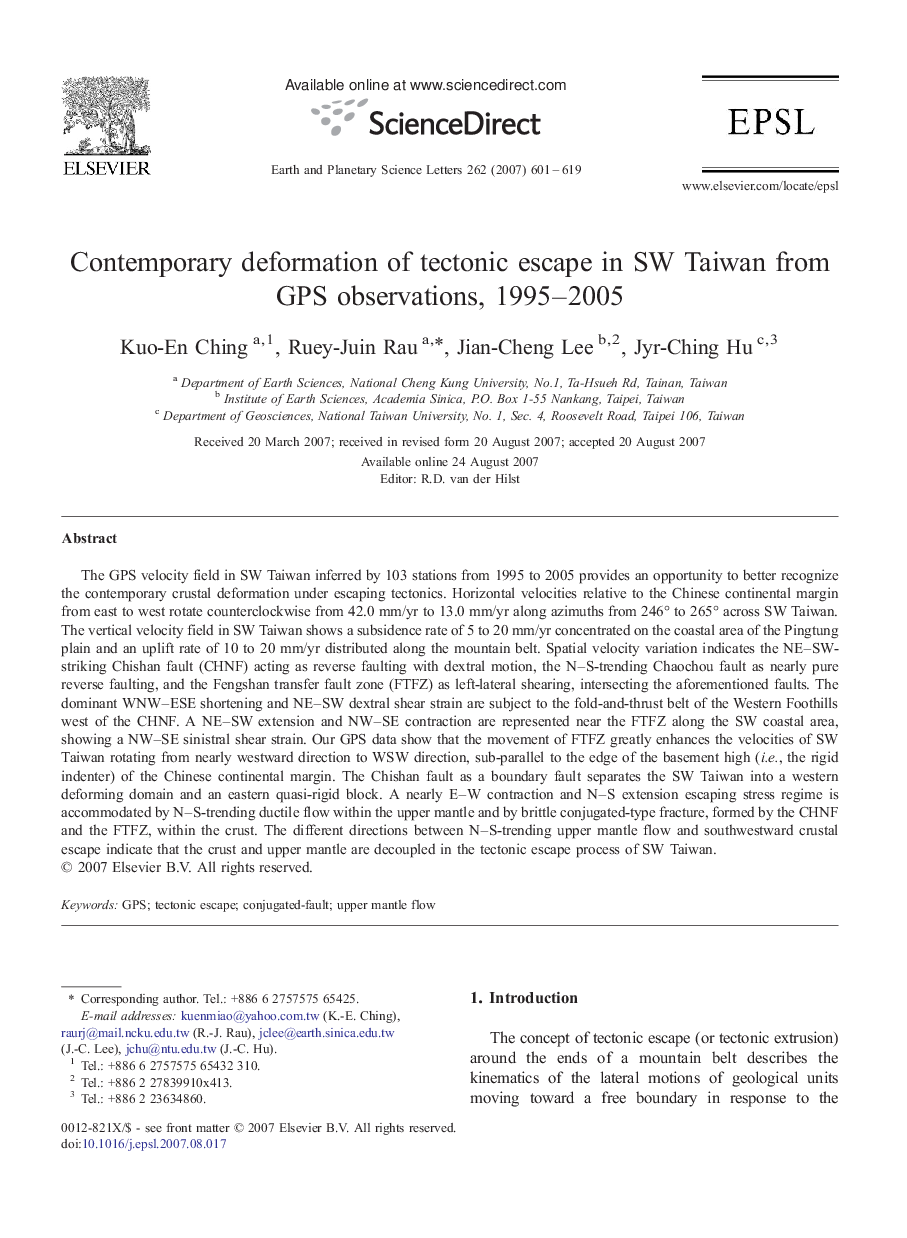| کد مقاله | کد نشریه | سال انتشار | مقاله انگلیسی | نسخه تمام متن |
|---|---|---|---|---|
| 4680129 | 1634910 | 2007 | 19 صفحه PDF | دانلود رایگان |

The GPS velocity field in SW Taiwan inferred by 103 stations from 1995 to 2005 provides an opportunity to better recognize the contemporary crustal deformation under escaping tectonics. Horizontal velocities relative to the Chinese continental margin from east to west rotate counterclockwise from 42.0 mm/yr to 13.0 mm/yr along azimuths from 246° to 265° across SW Taiwan. The vertical velocity field in SW Taiwan shows a subsidence rate of 5 to 20 mm/yr concentrated on the coastal area of the Pingtung plain and an uplift rate of 10 to 20 mm/yr distributed along the mountain belt. Spatial velocity variation indicates the NE–SW-striking Chishan fault (CHNF) acting as reverse faulting with dextral motion, the N–S-trending Chaochou fault as nearly pure reverse faulting, and the Fengshan transfer fault zone (FTFZ) as left-lateral shearing, intersecting the aforementioned faults. The dominant WNW–ESE shortening and NE–SW dextral shear strain are subject to the fold-and-thrust belt of the Western Foothills west of the CHNF. A NE–SW extension and NW–SE contraction are represented near the FTFZ along the SW coastal area, showing a NW–SE sinistral shear strain. Our GPS data show that the movement of FTFZ greatly enhances the velocities of SW Taiwan rotating from nearly westward direction to WSW direction, sub-parallel to the edge of the basement high (i.e., the rigid indenter) of the Chinese continental margin. The Chishan fault as a boundary fault separates the SW Taiwan into a western deforming domain and an eastern quasi-rigid block. A nearly E–W contraction and N–S extension escaping stress regime is accommodated by N–S-trending ductile flow within the upper mantle and by brittle conjugated-type fracture, formed by the CHNF and the FTFZ, within the crust. The different directions between N–S-trending upper mantle flow and southwestward crustal escape indicate that the crust and upper mantle are decoupled in the tectonic escape process of SW Taiwan.
Journal: Earth and Planetary Science Letters - Volume 262, Issues 3–4, 30 October 2007, Pages 601–619